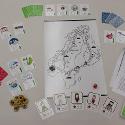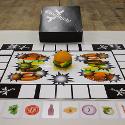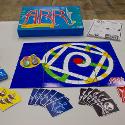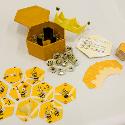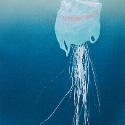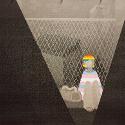Visual Language: Ideation and Creativity
Design thinking and visual literacy are dependent upon one another in a visual arts
context. Visual literacy is explored and practiced within the context of design thinking
problems, assignments, and motivations. Similarly, the design thinking assignments
for this class rely on visual literacy and visual language. This class is a required
class for all art majors and a RA CORE 2.0 class for non-art majors. This class is
relevant and useful to students in all majors, and especially relevant and helpful
to students in other design-oriented curricula such as engineering, architecture,
and film and photography.
Learning Outcomes
Students will:
- Acquire and execute creative thinking methods and processes and develop an understanding of a cyclical process of design thinking to generate questions and solutions. (Demonstrated through individual and collaborative assignments.)
- Discuss and critically assess the strengths, weaknesses and innovative potential of proposals and works from peers. (Demonstrated though verbal and written critiques.)
- Develop inventive concepts using various problem-solving techniques, such as divergent and convergent thinking, metaphor, and collaboration. (Demonstrated through problem generation, writing, problem solving [assignments], sketchbook/journal, and personal method cards.)
- Comprehend representational, explanatory, abstract, and symbolic images. (Demonstrated through writing assignments, visual solutions, and class discussions.)
- Develop basic abilities to interpret, recognize, construct, appreciate and negotiate information presented in the form of visible actions, images, objects and symbols, natural or human-made. (Demonstrated though visual assignments.)
- Understand emotional, symbolic and cognitive influences in perceptions of visuals. (Demonstrated through visual solutions, class discussions, and written and verbal critiques.)
- CORE 2.0 Designation: As a RA Core class, students are expected to develop their creative and intellectual potential through experiences in this class. In particular, the capstone assignment will require students to carry out an autonomous experience in the research and creative process and to generate a scholarly product, demonstrating an understanding of and the relationship between visual literacy and design thinking.

